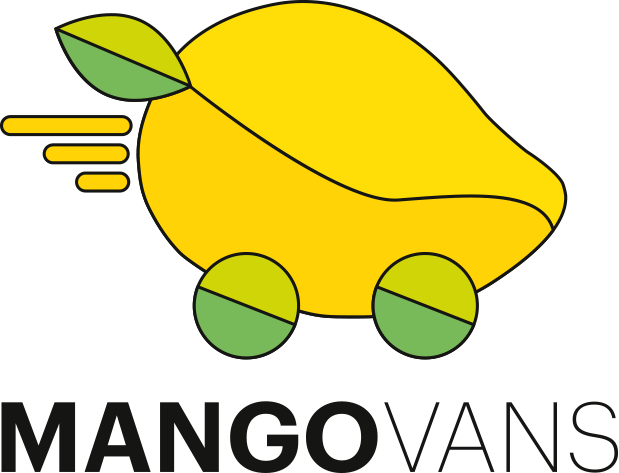Choosing the Best Chassis for a Professional Van Conversion and Its Overall Costs
Selecting the right van chassis for a professional conversion can feel like a big decision on your path to van life. This decision impacts not only the initial cost but also the long-term livability, maintenance, and overall value of your custom-built home on wheels.
This guide will help you understand how each major chassis option influences the professional conversion process and your ownership experience.
Chassis Deep Dive: A Side-by-Side Comparison
We’ll start by comparing the key players in the van chassis market: the Mercedes-Benz Sprinter, Ram ProMaster, and Ford Transit. Beyond the basic specifications, here’s how each one's characteristics affect your overall experience.
Mercedes-Benz Sprinter
The Sprinter has a stellar reputation for quality and is often seen as the gold standard for van conversions. Its sleek design and available 4x4 capability make it a popular choice for those seeking adventure off the beaten path. While its higher initial cost and specialized maintenance requirements can be a downside, the Sprinter generally holds its value well, offering a strong resale value. Overall, understanding the Mercedes Sprinter van conversion pros and cons can help you decide if it’s the right fit for your travel and lifestyle needs.
Ram ProMaster
Known for its boxy, conversion-friendly interior, the ProMaster is a top choice for a professional build due to its wide, vertical walls that simplify the construction of cabinets, beds, and other interior components. It also has a lower initial cost compared to the Sprinter. While it is a front-wheel-drive vehicle with lower clearance—limiting its suitability for rugged terrain—it offers a practical, budget-friendly platform that many builders see as a blank canvas for creative, space-maximizing conversions.
Ford Transit
The Ford Transit offers a balance of features and is a versatile option for conversions. A key advantage is its widespread service network, making maintenance and repairs more accessible and potentially less expensive. The Transit is also available in a wide range of roof heights and lengths, allowing for a highly customized build. Some models, though, may have lower fuel economy, which is a factor to consider for long-term ownership. It remains a popular choice among transit van conversion companies for its adaptability and ease of servicing.
Beyond the Specs: How Each Van Impacts Your Build
Now that you may have identified the ideal chassis for your needs, it’s time to look past the brochure.
The right decision here can save you money, boost livability, and make your van a joy to own for years. Each van brings its own set of challenges and advantages that directly impact build time, costs, and your overall travel comfort.
The Conversion Process
When it comes to van conversions, the shape and structure of your chassis can make or break the ease of the build. Straight, boxy walls typically mean less complex carpentry, faster installation, and lower labor costs, while curved or tapered interiors require more custom work.
At Mango Vans, we factor these design differences into every project to ensure the finished build is functional, stylish, and built to last.
Ease of Build – The Ram ProMaster’s boxy, vertical walls simplify cabinet, bed, and storage installation, minimizing the need for custom angles or complex carpentry—a feature many ProMaster van conversion companies use to streamline projects. The Mercedes-Benz Sprinter, with its gently curved walls, may require more precise cutting and fitting to achieve a clean finish, which Mercedes Sprinter van conversion companies often address with specialized design solutions. The Ford Transit strikes a middle ground—its walls are not as square as the ProMaster’s but generally easier to work with than the Sprinter’s.
Labor Hours & Custom Work – Wall shapes, roof heights, and interior widths all influence the labor needed for paneling, insulation, wiring, and finishing. The ProMaster’s straighter lines can reduce build time, while the Sprinter’s tapered design can extend project schedules due to the extra fitting required. The Transit tends to require moderate customization—more than a ProMaster, less than a Sprinter—though unique layouts and features can shift that balance for any builder.
Materials & Quality – All three chassis types benefit from durable, high-quality materials that not only look appealing but also hold up to years of road use. Whether the foundation is a ProMaster, Sprinter, or Transit, professional builders rely on premium woods, composites, fasteners, and finishes to create a safe, comfortable, and long-lasting build.
Cost of Ownership
Van ownership costs extend far beyond the initial purchase price. You’ll need to consider the expense of the conversion itself, as well as long-term maintenance, repairs, and replacement parts. Understanding a van conversion cost breakdown can help you budget realistically and avoid surprises down the road.
Conversion Costs – Simpler shapes like the ProMaster’s can lower your conversion bill, while complex builds in a Sprinter may cost more upfront due to added labor.
Maintenance & Repairs – The Ford Transit’s widespread service network and readily available parts help keep repair costs in check, while the Sprinter’s specialized components can mean pricier upkeep.
Build Quality Matters – Investing in top-tier appliances, electrical systems, and plumbing—like the products we use at Mango Vans—can raise your initial budget but prevent costly breakdowns and replacements later.
Final Destination
Where and how you plan to travel should weigh heavily on your chassis decision. A van that’s perfect for city driving might struggle on backcountry trails, while an off-road-ready rig could be overkill for mostly highway travel.
Off-Road Adventures – If you dream of boondocking in remote, rugged locations, the Sprinter’s available 4x4 offers unmatched capability despite the higher price tag.
City & Highway Travel – For paved-road journeys, urban exploring, and service convenience, the Ford Transit and Ram ProMaster offer practical, cost-effective options.
Lifestyle Fit – Mango Vans helps match your chassis choice to your dream custom build camper vans—whether that’s chasing mountain trails, cruising coastal highways, or living full-time on the road.
This quick guide helps you spot the best fit for your van conversion needs at a glance.
| Feature / Model | Mercedes-Benz Sprinter | Ram ProMaster | Ford Transit |
|---|---|---|---|
| Reputation | Premium quality, “gold standard” for van conversions | Practical, conversion-friendly | Versatile, well-balanced option |
| Design | Sleek, available 4x4 for off-road | Boxy, vertical walls for easy builds | Multiple roof heights & lengths for customization |
| Drive Type | RWD or AWD (4x4 option) | Front-wheel drive | RWD or AWD |
| Terrain Capability | Excellent for rugged terrain | Limited for rugged terrain due to low clearance | Good with AWD models |
| Interior Build Ease | Slightly curved walls, less square | Very easy due to flat walls | Flexible, but less boxy than ProMaster |
| Initial Cost | Higher | Lower | Mid-range |
| Maintenance | Specialized, higher cost | More affordable | Widely available, generally affordable |
| Fuel Economy | Good for size, varies by model | Moderate | Lower in some models |
| Resale Value | High | Moderate | Moderate to high |
| Best For | Premium builds, off-road adventures | Budget-friendly, pro builds | Flexible, service-accessible conversions |
The Decisive Factor: Why a Custom Build Matters
While the chassis is the foundation, a professional conversion company can make any van feel like the perfect home. A skilled builder can create a custom layout that makes a Sprinter feel more spacious or a ProMaster feel more luxurious, effectively mitigating the inherent weaknesses of a particular chassis. The real magic happens when an expert turns your vision into reality.
A professional converter can optimize the strengths of any van, ensuring a high-quality, long-lasting build. This level of craftsmanship and attention to detail is what transforms a simple van into a comfortable, functional, and personalized space.
Finding the Ideal Chassis for the Best Camper Conversion
The proper chassis for your custom camper van build is a significant decision, with each van offering unique trade-offs in terms of cost, livability, and performance.
The Mercedes-Benz Sprinter offers quality and off-road capability but comes at a higher price. The Ram ProMaster is a budget-friendly and conversion-friendly option, while the Ford Transit provides accessibility and versatility, especially when handled by experienced Ford Transit conversion companies that know how to maximize its potential.
The best van is ultimately the one that matches your travel goals and budget—then crafted into your perfect home on wheels.
At Mango Vans, we specialize in turning the right chassis into a custom build that’s ready for your adventures. Contact us today to start your best camper conversion journey.



